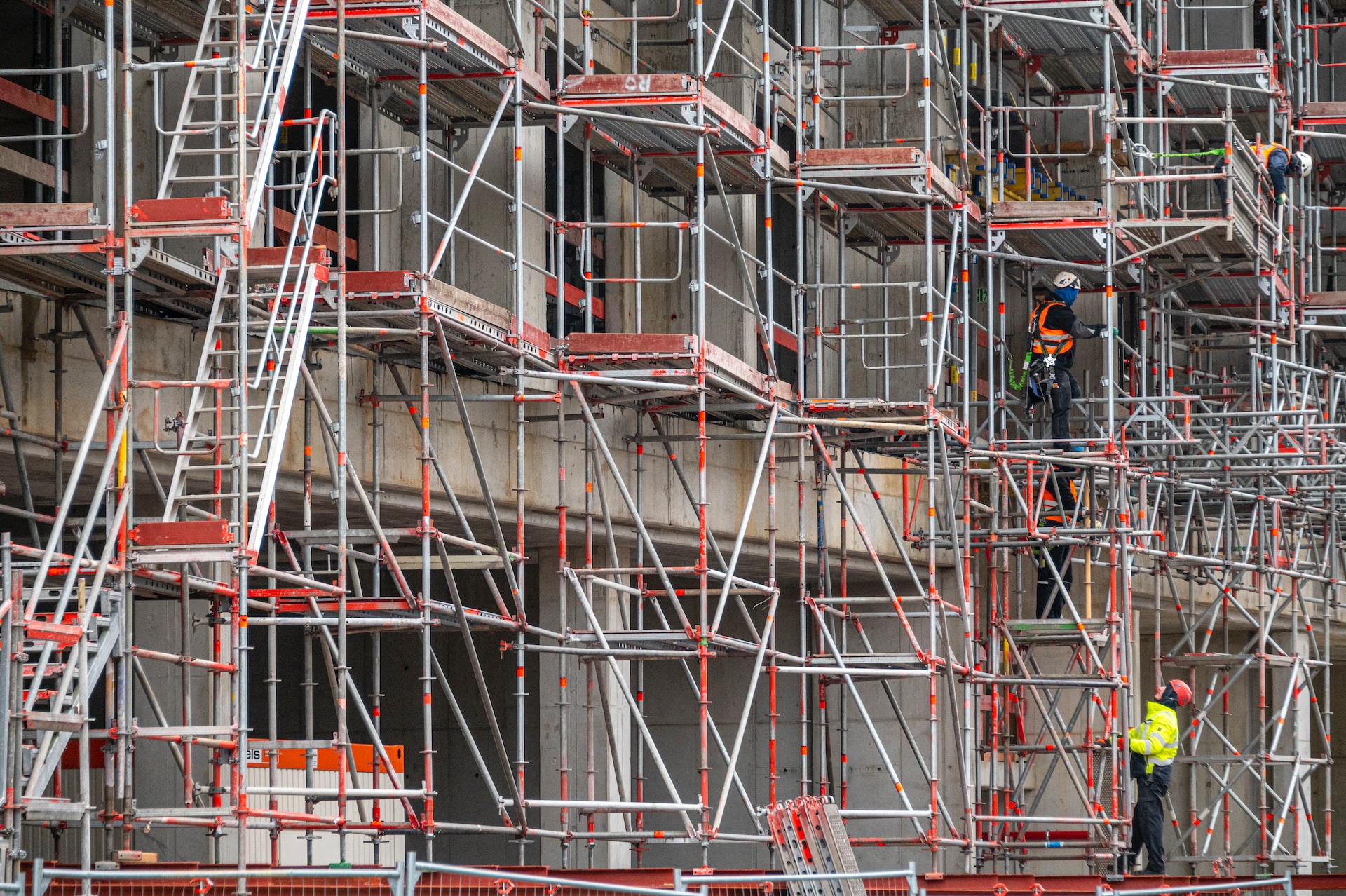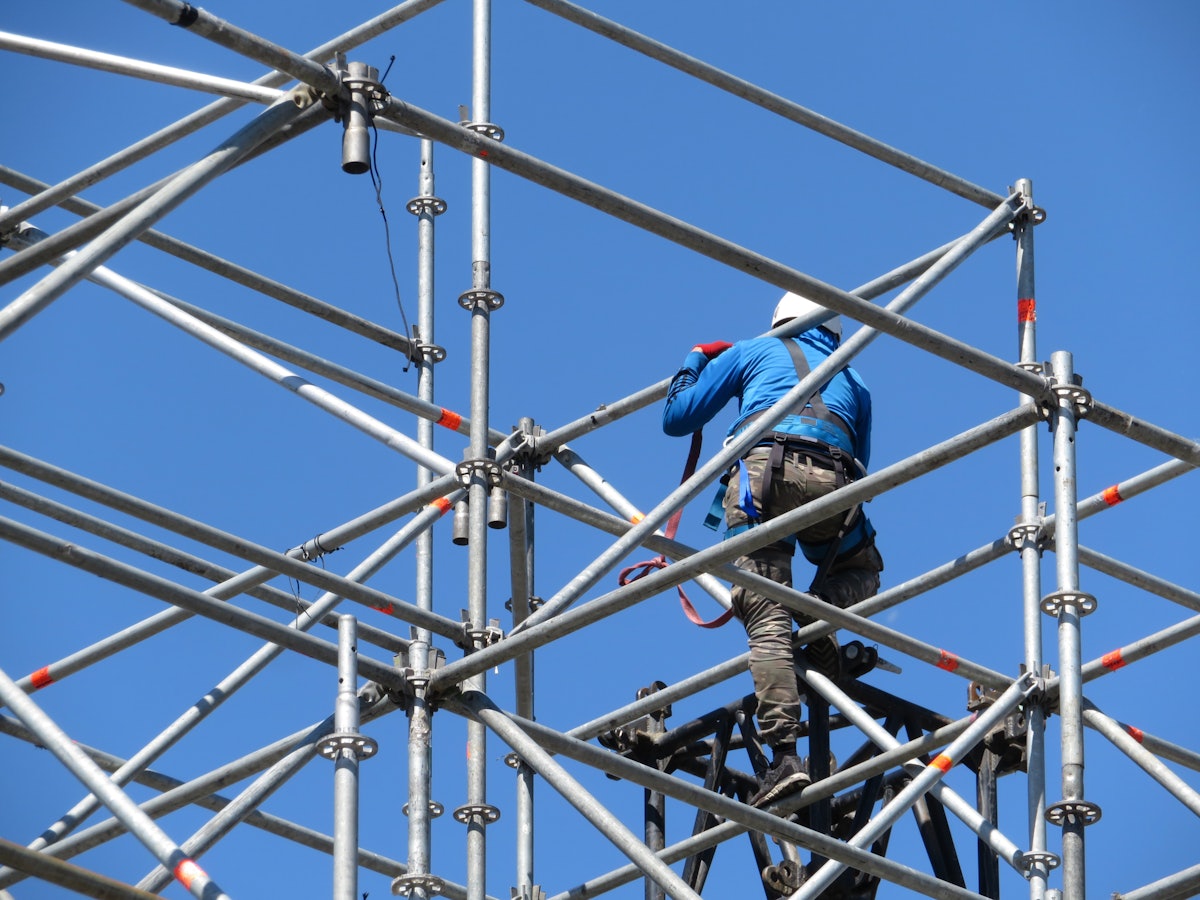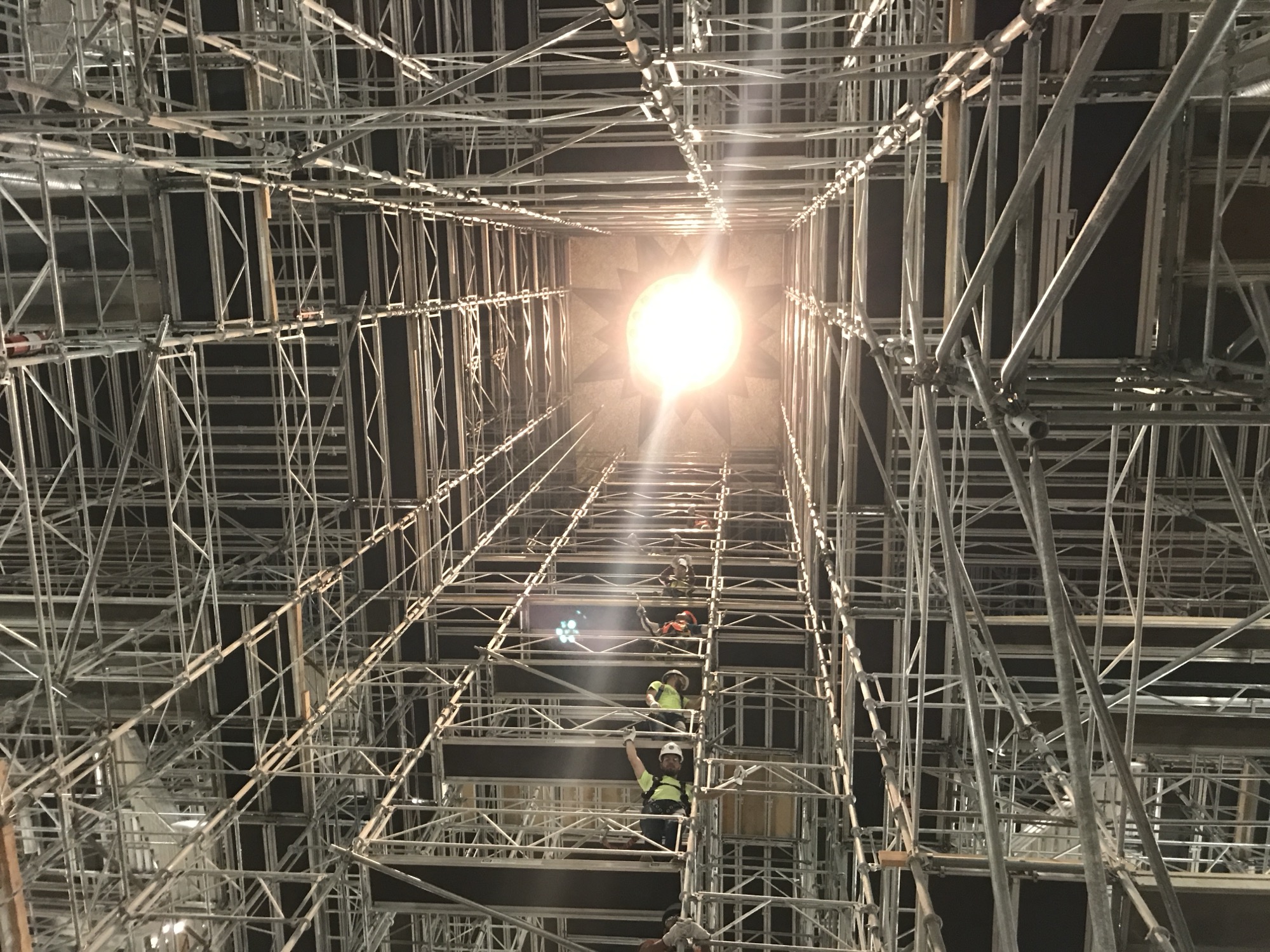Checking Out the Numerous Kinds Of Scaffolding Utilized in Building Tasks
The construction sector counts greatly on different kinds of scaffolding to satisfy particular task demands, each offering distinct advantages and applications. Typical framework scaffolding provides a strong structure for basic jobs, while put on hold scaffolding is vital for service high-rise structures. Other choices, such as system and rolling scaffolding, accommodate effectiveness and wheelchair, respectively. The cantilever variant verifies invaluable in metropolitan atmospheres where space is constrained. Recognizing the nuances of these scaffolding types is essential for enhancing security and performance on building and construction websites, motivating a more detailed examination of their one-of-a-kind characteristics and applications.

Standard Structure Scaffolding
Typical structure scaffolding is among one of the most extensively utilized techniques in the construction sector as a result of its toughness and convenience. This system includes straight and vertical frameworks that are constructed to create a steady platform for products and employees. The major parts consist of upright posts, straight journals, and diagonal braces, which together offer a strong structure that can sustain considerable tons.
Among the crucial advantages of standard frame scaffolding is its versatility to numerous building projects, ranging from property buildings to large commercial frameworks. The modular design allows for simple setting up and disassembly, making it reliable for both long-lasting and short-term projects. In addition, the system can be customized in height and width, fitting various structure designs and website problems.
Safety is vital in scaffolding applications, and typical structure systems are furnished with guardrails and toe boards to avoid falls and guarantee worker defense. Moreover, routine examinations and adherence to security laws are vital in keeping the honesty of the scaffold. Generally, typical frame scaffolding remains an essential option in the building industry, offering a reliable system for labor and boosting general project performance

Suspended Scaffolding
Suspended scaffolding offers a distinct solution for building tasks that require accessibility to raised surfaces, especially in scenarios where traditional frame scaffolding may be unwise. This kind of scaffolding is commonly suspended from the roofing or top degrees of a structure, using a system of systems, ropes, and pulleys to produce a functioning space that can be changed to different elevations.
Among the primary benefits of put on hold scaffolding is its versatility. It can be conveniently rearranged or lowered to fit changes in building requirements, making it perfect for tasks such as home window setup, façade job, and upkeep on skyscraper structures. In addition, the minimal footprint of suspended scaffolding permits better use ground area in metropolitan atmospheres, where space is typically restricted.
Safety is an important consideration in the usage of put on hold scaffolding. Overall, put on hold scaffolding supplies a effective and efficient option for accessing hard-to-reach areas in different building circumstances, improving both efficiency and security on site.
System Scaffolding
System scaffolding, typically considered a modern solution in the scaffolding market, contains pre-engineered elements that can be quickly assembled and adjusted for different building and construction jobs. Scaffolding. This type of scaffolding is identified by its modular style, which allows for adaptability and effectiveness on task sites, suiting different heights and structural requirements
Normally made from high-strength steel or aluminum, system scaffolding provides enhanced durability and security. The parts include upright messages, straight journals, and diagonal dental braces, which adjoin securely, guaranteeing a durable framework. The style often integrates standardized fittings, streamlining setting up and disassembly procedures, consequently decreasing labor time and prices.

Rolling Scaffolding
Moving scaffolding is a flexible alternative to traditional fixed scaffolding, created for movement and ease of usage on building websites. This sort of scaffolding contains a system sustained by frames with wheels, permitting employees to conveniently relocate it as required. The mobility function dramatically improves performance, as it lessens downtime associated with assembling and taking apart fixed scaffolding.
Commonly built from light-weight materials such as light weight aluminum or steel, rolling scaffolding provides a sturdy yet mobile solution for projects requiring frequent repositioning - Scaffolding. It is especially advantageous in tasks such as paint, drywall installment, and electric job, where access to different heights and places is necessary
Security is extremely important in rolling scaffolding design, with features such as securing wheels to avoid unexpected activity when in usage, and guardrails to safeguard employees from drops. In addition, many models are flexible in elevation, suiting various task requirements.
Cantilever Scaffolding

The design of cantilever scaffolding generally includes using arms or braces scaffolder occupation secured to a structure or structure, making it possible for the system to prolong outward securely. Safety is Discover More Here critical; thus, these scaffolds need to be engineered to stand up to ecological conditions and different loads. Routine inspection and upkeep are vital to make certain architectural honesty and worker security.
Cantilever scaffolding is favored for its flexibility and reliable use area, making it a preferred choice in metropolitan settings where space restrictions are usual. In addition, it facilitates simpler accessibility to high altitudes, eventually adding to the overall effectiveness of building and construction projects. Just like all scaffolding types, proper training and adherence to security requirements are vital for workers utilizing cantilever scaffolding.
Final Thought
To conclude, the varied kinds of scaffolding made use of in building projects each serve distinct purposes customized to particular website demands. Typical structure scaffolding provides stability, while suspended scaffolding provides flexibility for elevated jobs. System scaffolding facilitates quick setting up, and rolling scaffolding boosts flexibility for varying workplace. Cantilever scaffolding efficiently deals with challenges in city setups. Comprehending these scaffolding types is vital for optimizing security and efficiency in construction, ultimately adding to the effective completion of jobs.
Conventional structure scaffolding provides a sturdy structure for general jobs, while suspended scaffolding is important for work on high-rise frameworks.Rolling scaffolding is a versatile alternative to traditional set scaffolding, designed for movement and convenience of use on building you can try here and construction websites. As with all scaffolding kinds, correct training and adherence to security standards are important for workers using cantilever scaffolding.
Conventional structure scaffolding supplies security, while suspended scaffolding uses flexibility for raised jobs. System scaffolding promotes quick assembly, and rolling scaffolding improves mobility for differing job environments.